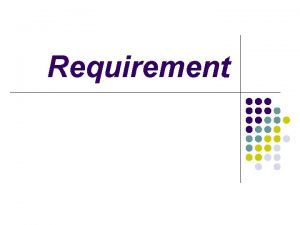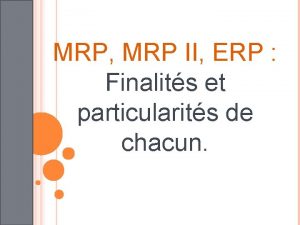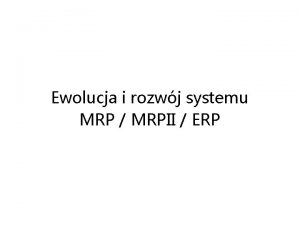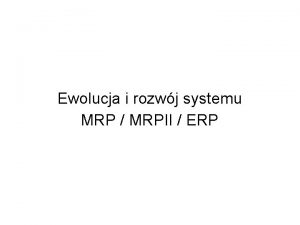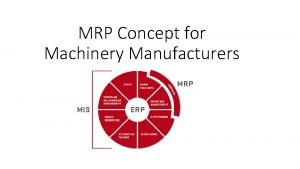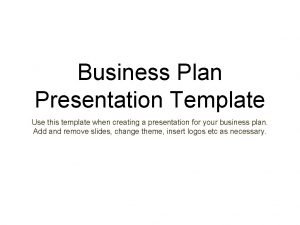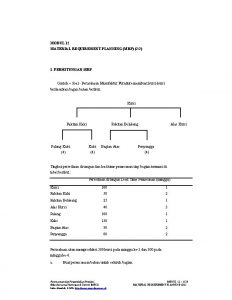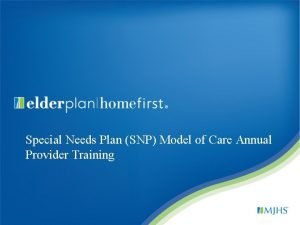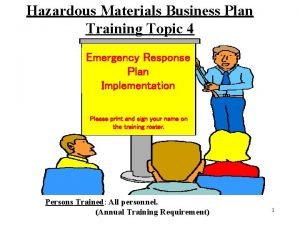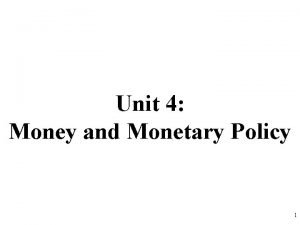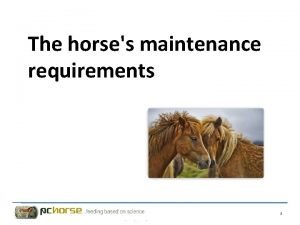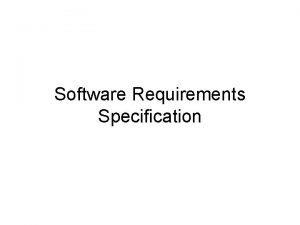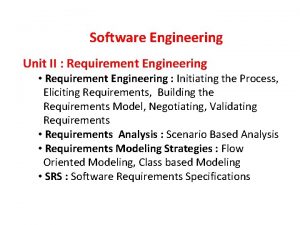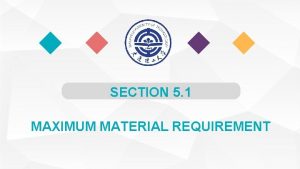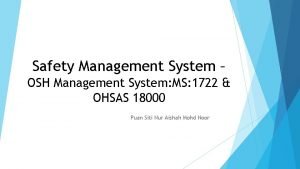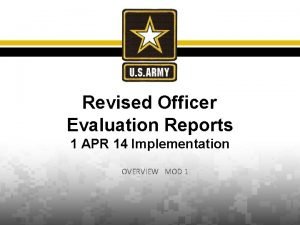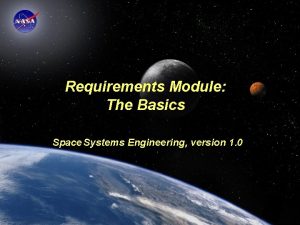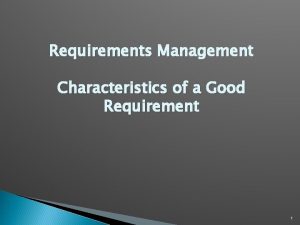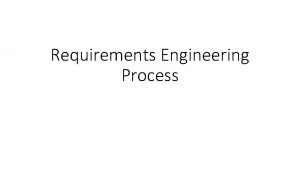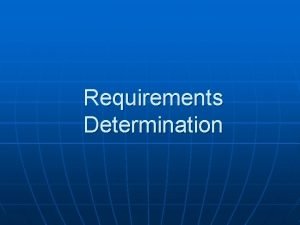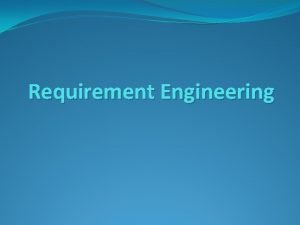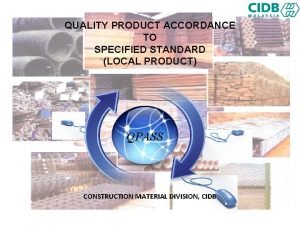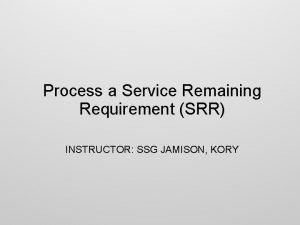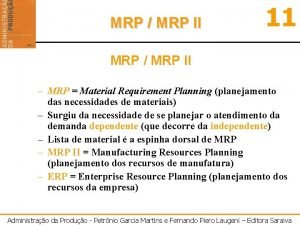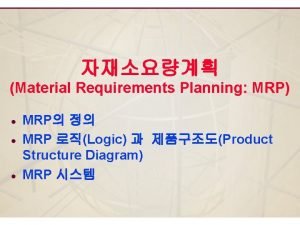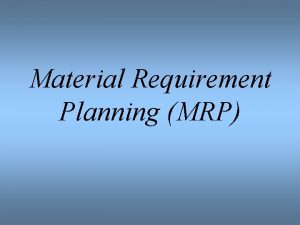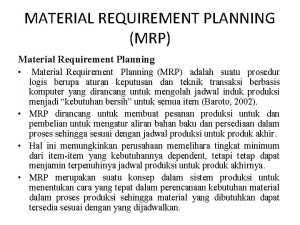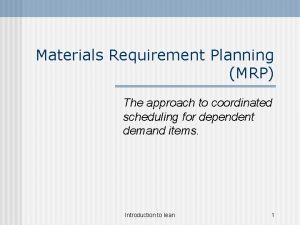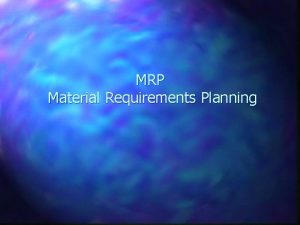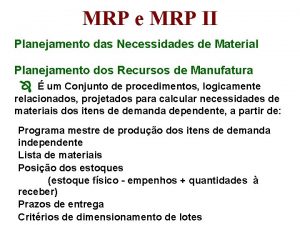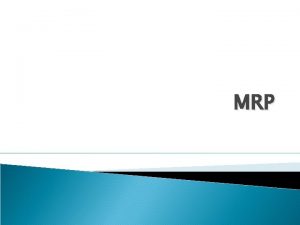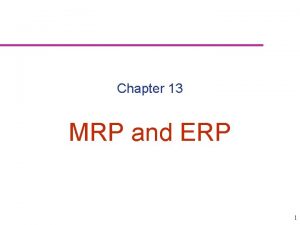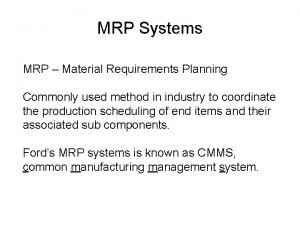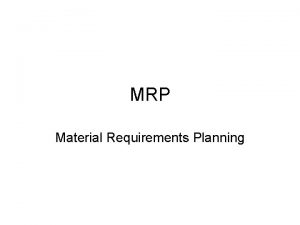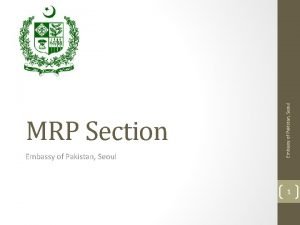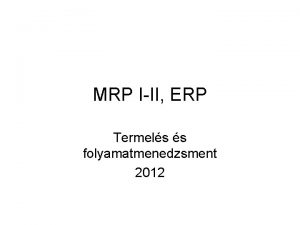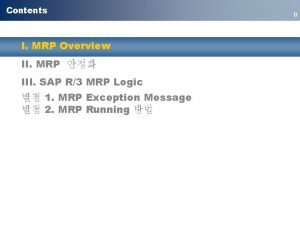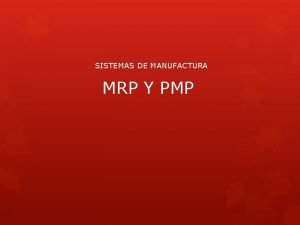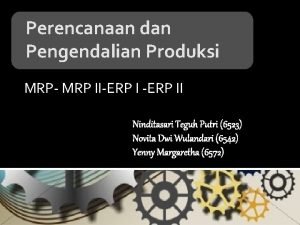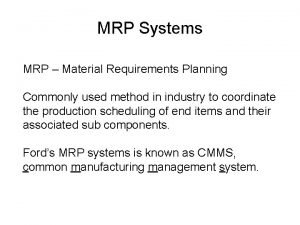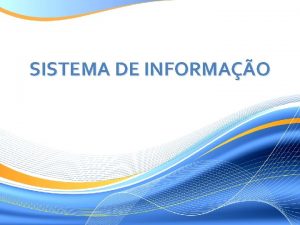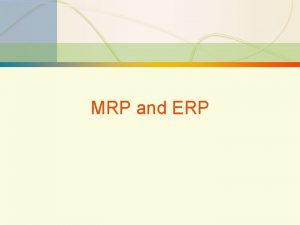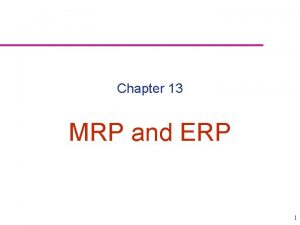MRP Materials Requirement Plan Popular concept in 19601970
![MRP [Materials Requirement Plan] ØPopular concept in 1960&1970 ØConsists of a computer system & MRP [Materials Requirement Plan] ØPopular concept in 1960&1970 ØConsists of a computer system &](https://slidetodoc.com/presentation_image_h2/de77c123dc1b6840d8c59b75de8804d9/image-1.jpg)




![Development ØFirst phase is called MRP I [Materials Requirement Planning] ØSecond phase is called Development ØFirst phase is called MRP I [Materials Requirement Planning] ØSecond phase is called](https://slidetodoc.com/presentation_image_h2/de77c123dc1b6840d8c59b75de8804d9/image-6.jpg)
![ØMRP I [soft ware] is restricted to materials resource only • Attempts to minimize ØMRP I [soft ware] is restricted to materials resource only • Attempts to minimize](https://slidetodoc.com/presentation_image_h2/de77c123dc1b6840d8c59b75de8804d9/image-7.jpg)
![Process of MRP I ØMRPI starts with, customer’s demand [independent demand] and explodes the Process of MRP I ØMRPI starts with, customer’s demand [independent demand] and explodes the](https://slidetodoc.com/presentation_image_h2/de77c123dc1b6840d8c59b75de8804d9/image-8.jpg)


![Advantages of MRP I 1. Improved business results [ROI, profits] 2. Improved manufacturing results Advantages of MRP I 1. Improved business results [ROI, profits] 2. Improved manufacturing results](https://slidetodoc.com/presentation_image_h2/de77c123dc1b6840d8c59b75de8804d9/image-11.jpg)




![Orders [production plan] Bill of materials Inventory records Material requirement planning [MRP] Capacity requirement Orders [production plan] Bill of materials Inventory records Material requirement planning [MRP] Capacity requirement](https://slidetodoc.com/presentation_image_h2/de77c123dc1b6840d8c59b75de8804d9/image-16.jpg)





![v DRP II ØDistribution Resource Planning [DRP II ]is an extension of DRP I v DRP II ØDistribution Resource Planning [DRP II ]is an extension of DRP I](https://slidetodoc.com/presentation_image_h2/de77c123dc1b6840d8c59b75de8804d9/image-22.jpg)














- Slides: 36
![MRP Materials Requirement Plan ØPopular concept in 19601970 ØConsists of a computer system MRP [Materials Requirement Plan] ØPopular concept in 1960&1970 ØConsists of a computer system &](https://slidetodoc.com/presentation_image_h2/de77c123dc1b6840d8c59b75de8804d9/image-1.jpg)
MRP [Materials Requirement Plan] ØPopular concept in 1960&1970 ØConsists of a computer system & a manufacturing information system ØDoes production scheduling and materials planning 1

MRP system ØMRP systems compute • Net requirements for each inventory item • Time-phase them • Determine their proper coverage 2

MAJOR ASSEMBLY SUB ASSEMBLY II SUB ASSEMBLY I A 1 A 2 B 1 C 2 C 3 D 1 D 2 SUB ASSEMBLY II A 3 A 4 C 4 D 3 D 4 C 5 B 2 A 5 D 5 3

Objectives ØEnsure the availability of materials (components & products) for planned production and customer delivery ØMaintain the lowest possible inventory level ØPlan • Manufacturing activities • Delivery schedules • And purchasing activities 4

Scope MRP System covers inbound logistical area Key elements of MRP system ØMaster Production Schedule ØBill of Materials ØInventory Status Files ØMRP Program ØOutputs & Reports 5
![Development ØFirst phase is called MRP I Materials Requirement Planning ØSecond phase is called Development ØFirst phase is called MRP I [Materials Requirement Planning] ØSecond phase is called](https://slidetodoc.com/presentation_image_h2/de77c123dc1b6840d8c59b75de8804d9/image-6.jpg)
Development ØFirst phase is called MRP I [Materials Requirement Planning] ØSecond phase is called MRP II [Manufacturing Resources Planning] 6
![ØMRP I soft ware is restricted to materials resource only Attempts to minimize ØMRP I [soft ware] is restricted to materials resource only • Attempts to minimize](https://slidetodoc.com/presentation_image_h2/de77c123dc1b6840d8c59b75de8804d9/image-7.jpg)
ØMRP I [soft ware] is restricted to materials resource only • Attempts to minimize inventories • Maintain adequate materials for production process. ØMRP II includes all resources required in planning and control of production 7
![Process of MRP I ØMRPI starts with customers demand independent demand and explodes the Process of MRP I ØMRPI starts with, customer’s demand [independent demand] and explodes the](https://slidetodoc.com/presentation_image_h2/de77c123dc1b6840d8c59b75de8804d9/image-8.jpg)
Process of MRP I ØMRPI starts with, customer’s demand [independent demand] and explodes the time and need for components based on the demand for end product 8

inventory transactions Inventory status file [finished items, WIP, planned orders Customers orders Forecast s Master production schedule [which product to produce, in what quantity & when] MRP I SYSTEM PLANNED SCHEDULES AND VARIOUS OTHER REPORTS Engineering changes Bill of materials file [product structure and routing] 9

When does it get applied? Ø The process follows an intermittent system Ø Demand is dependent Ø Purchasing dept. , their suppliers and company’s own manufacturing system is flexible enough to handle deliveries on weekly basis 10
![Advantages of MRP I 1 Improved business results ROI profits 2 Improved manufacturing results Advantages of MRP I 1. Improved business results [ROI, profits] 2. Improved manufacturing results](https://slidetodoc.com/presentation_image_h2/de77c123dc1b6840d8c59b75de8804d9/image-11.jpg)
Advantages of MRP I 1. Improved business results [ROI, profits] 2. Improved manufacturing results 3. Better manufacturing control 4. Less inventory 5. Time phased ordering of materials 6. Less materials obsolescence 11

7. Higher reliability 8. More responsiveness to market demand 9. Reduced production costs 12

Disadvantages of MRP I 1. Due to small lot purchases high material acquisition costs and high ordering costs 2. Stock out costs are more as safety stock protection is low 3. A limitation of software as adapting to specific situations is difficult. So modification of the software is necessary 13

MRP II Ø MRP I is updated and expanded to include • • Financial, marketing and logistics elements Entire set of activities involved in planning and control of production • It consists of variety of functions like • Production planning 14

• Resource requirements planning • Master production scheduling • Materials requirement planning [MRP I] • Shop floor control • Purchasing 15
![Orders production plan Bill of materials Inventory records Material requirement planning MRP Capacity requirement Orders [production plan] Bill of materials Inventory records Material requirement planning [MRP] Capacity requirement](https://slidetodoc.com/presentation_image_h2/de77c123dc1b6840d8c59b75de8804d9/image-16.jpg)
Orders [production plan] Bill of materials Inventory records Material requirement planning [MRP] Capacity requirement planning [CRP] No Realistic? yes Execute capacity plans Execute materials plan 16

Benefits of MRP II ØInventory reductions of one fourth to one third ØHigher inventory turn over ØImproved consistency in on-time customer delivery ØReduction in purchasing costs due to less urgent purchases ØMinimization of workforce overtime 17

DRP is a technique of Distribution Management ØDRP concept has evolved in two phases, DRPI (Distribution Requirement Planning) & DRP II (Distribution Resources Planning) ØDRP I deals with inventory planning 18

ØDRP II covers all resources relevant to distribution • Warehouse space • Man power levels • Transport capacity [eg. trucks, rail cars] • Financial flows 19

v DRP I ØApplicable to outbound logistics ØDetermination of inventory requirement at points of consumption for short spans of time Ø Plan to move inventory in the distribution channel in response to the above Ø It is a time phased plan, dynamic and flexible in nature 20

Ø Customer dependent planning, depends on the changing market environment ØNot organization dependent ØCoordination responsibility once the finished goods are produced Ø Planning is realistic as it is closer to real time Ø Overall inventory levels are low Ø Response time to real time market requirement is low 21
![v DRP II ØDistribution Resource Planning DRP II is an extension of DRP I v DRP II ØDistribution Resource Planning [DRP II ]is an extension of DRP I](https://slidetodoc.com/presentation_image_h2/de77c123dc1b6840d8c59b75de8804d9/image-22.jpg)
v DRP II ØDistribution Resource Planning [DRP II ]is an extension of DRP I ØDRP II applies the time phased logic of DRP I to replenish inventories in multi echelon warehousing systems 22

ØDRP II extends DRP I to include the planning of key resources in a distribution system –ware house space, man power levels, transport capacity [eg. trucks, rail cars] and financial flows 23

ØDRP PROCESS Ø Planning tool for DRP is schedule ØSchedule for each SKU at each distribution facility on daily, weekly or monthly basis ØIntegration of the above schedules and overall requirement planning for the regional warehouse and central supply facility 24

As an extension of DRP I, DRP II uses the needs of distribution to drive the master schedule, controlling the materials planning 25

Marketing benefits Ø Increased service levels - improved OTD, reduced Customer Complaints ØEffective new product introduction plans ØAbility to anticipate shortages ØImproved inventory coordination 26

Logistics benefits ØReduced distribution costs ØReduced inventory levels ØDecreased warehouse space requirement as inventory levels are low ØLesser back orders ØImproved inventory visibility & co-ord. between manufacturing and logistics 27

v. Constraints ØNeeds accurate forecast ØSources of errors in the system üInaccuracy in forecast quantity üInaccuracy in forecast location üInaccuracy in forecast time ØVariable performance cycles 28

ØSystem nervousness-frequent rescheduling causing confusion ØUncertainty buffers 29

v. How does a DRP system work? ØConsider a distribution net work with three distribution centers catering to the needs of the market ØOne central facility that supplies inventory to three distribution centers 30

ØCentral facility is supplied by the production facility planned as per MRP ØDRP modifies the MRP to the advantage of the organization 31

DRP & MRP LINK DISTRIBUTION CENTER I LEAD TIME IS 2 WEEKS, SAFETY STOCK IS 55, ORDER QUANTITY 500 WEEKS DETAILS 0 1 2 3 4 5 6 7 8 WEEKLY REQ - 50 50 60 70 80 70 60 50 STOCK 352 302 252 192 122 542 472 412 362 WHEN & HOW MUCH? 500 Order to Central Supply Facility 500 Arrival From Central Supply Facility 32

DISTRIBUTION CENTER II LEAD TIME IS 2 WEEKS, SAFETY STOCK IS 40, ORDER QUANTITY 150 WEEKS DETAILS 0 1 2 3 4 5 6 7 8 WEEKLY REQ - 20 25 15 20 30 25 15 30 STOCK 140 120 95 80 60 180 135 145 110 WHEN & HOW MUCH? 150 Order to Central Supply Facility 150 Arrival from Central Supply Facility 33

DISTRIBUTION CENTER III LEAD TIME IS 2 WEEKS, SAFETY STOCK IS 115, ORDER QUANTITY 800 DETAILS 0 1 2 3 4 5 6 7 8 WEEKLY REQ - 115 120 125 125 120 STOCK 1020 905 790 670 550 425 300 175 855 WEEKS WHEN & HOW MUCH? Order to Central Supply Facility 800 Arrival from Central Supply Facility 34

LEAD TIME IS 3 WEEKS, SAFETY STOCK IS 287, ORDER QUANTITY 2200 CENTRAL SUPPLY FACILITY From I & II From III WEEKS DETAILS 0 1 2 3 4 5 6 7 8 WEEKLY REQ - - - 650 - - 800 - - STOCK 1250 600 600 2000 WHEN & HOW MUCH? 2200 TO MRP SCHEDULE 2200 FROM PRODUCTION 35

36
 Jenis requirement
Jenis requirement Mrp mrp ii erp
Mrp mrp ii erp Systemy klasy mrp
Systemy klasy mrp Mrp iii
Mrp iii Mrp concept
Mrp concept Personnel requirement in business plan
Personnel requirement in business plan Personnel requirement in business plan
Personnel requirement in business plan Material requirement plan
Material requirement plan Requirement analysis model in software engineering
Requirement analysis model in software engineering Favourite cars
Favourite cars Useful and harmful materials images
Useful and harmful materials images Man made materials
Man made materials Adopting and adapting teaching materials
Adopting and adapting teaching materials Direct materials budget with multiple materials
Direct materials budget with multiple materials Self ideal example
Self ideal example Contoh selling concept
Contoh selling concept Elderplan plan materials
Elderplan plan materials Hazardous materials business plan
Hazardous materials business plan What is gross working capital
What is gross working capital Reserve requirement ratio
Reserve requirement ratio Maintenance requirement example
Maintenance requirement example System requirements specification
System requirements specification Cspec in software engineering
Cspec in software engineering Dfd symbols
Dfd symbols Bona fide occupational requirement
Bona fide occupational requirement Maximum material condition
Maximum material condition Osh ms
Osh ms Senior rater profile calculator
Senior rater profile calculator What is a derived requirement
What is a derived requirement Qualities of a good requirement
Qualities of a good requirement User requirement
User requirement A spiral view of the requirements engineering process
A spiral view of the requirements engineering process What is requirement determination
What is requirement determination Requirement analysis diagram
Requirement analysis diagram Inception requirements engineering
Inception requirements engineering Cidb product certification
Cidb product certification Service remaining requirement
Service remaining requirement
